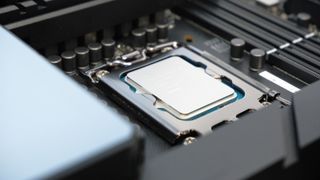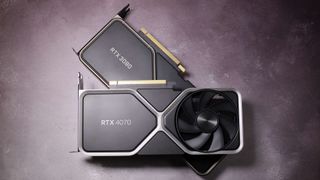Intel's 14th Gen CPUs are now so cheap it might be worth rolling the dice on those supposedly solved instability issues
$230 for a Core i5-14600KF is fairly hard to ignore.

- Intel Core i5 14600KF - $230 @ Amazon
- Intel Core i7 14700KF - $328 @ Amazon
- Intel Core i9 14900K - $443 @ Amazon
According to Nick, our in-house chip-sniffer extraordinaire, Intel's microcode patches do indeed seem to have solved the voltage spike issues at the root of the 13th and 14th Gen Core CPU instability problem. With that in mind, the sudden price cratering of run-out 14th Gen models, no doubt in anticipation of the arrival of Intel's shiny new Arrow Lake processors, makes for an intriguing development.
That's especially true when you consider the disappointing gaming performance of Arrow Lake and to some extent AMD's latest Zen 5-based CPUs, too. Long story short, 14th Gen Intel is still very decent for gaming and with new CPUs from both Intel and AMD recently released, the competitive landscape won't be changing much for the next year or two.
But what of specifics? Well, how about an Intel Core i5 14600KF for $230 on Amazon? When we first reviewed the closely related 14600K (the "F" suffix indicates that the mostly irrelevant integrated GPU has been disabled) almost exactly one year ago, it was a $330 chip.
Now you can have exactly the same setup of six Raptor Cove spec Performance cores running at up to 5.3GHz and eight Gracemont Efficient cores for fully $100 less.
That's one heck of a price drop. Moreover, according to Intel's own benchmarks for the top Arrow Lake CPU, the Core Ultra 9 285K, the new chip is actually very slightly slower on average for games than the old Core i9 14900K.
The equivalent model to the 14600KF in the new Arrow Lake range is the Core Ultra 5 245KF which has a recommended retail price of $294. For gaming, the extra $65 or thereabouts for the new chip will net you very little.
Of course, when you broaden out the remit a bit, Arrow Lake has stuff going for it. It's much more efficient, has some advantages for content creation and gets you into a brand new Intel CPU socket and platform and therefore offers more upgrade potential down the line.
The biggest gaming news, reviews and hardware deals
Keep up to date with the most important stories and the best deals, as picked by the PC Gamer team.
But in the here and now, if you are an Intel fan and if gaming is your primary focus, well, a 14600KF for just $230 looks fairly compelling. The big question mark is the aforementioned stability debacle that afflicated Intel's 13th and 14th Gen chips. Can you fully trust that the problem has been fixed?
We think that's likely to be the case. But it's impossible to be 100% certain. So, it all comes down to a risk-reward calculation. Is the 14600KF now cheap enough to be worth the risk? We think that's a probable yes. But it is frustrating that it's not a definite yes.

Best CPU for gaming: The top chips from Intel and AMD.
Best gaming motherboard: The right boards.
Best graphics card: Your perfect pixel-pusher awaits.
Best SSD for gaming: Get into the game ahead of the rest.
There are also some great deals further up the Raptor Lake stack. The 14700KF can now be had for $328, while the 14900K flagship is yours for $443. Both are much, much cheaper than before.
However, we'd be less inclined to roll the dice on those models. The more you spend, the more justified you are in having higher expectations around reliability and performance. At over $400, you're getting up near AMD Ryzen 9 9900X money, for instance.
Anyway, the value proposition here, if it exists, definitely feels like it works better at the lower end. The 14600KF for just $230 is an awful lot of gaming CPU for the money and the slight risk that Intel hasn't totally resolved those 13th and 14th Gen issues is arguably well priced in at that level.
Ultimately, your attitude to that risk is going to be a personal thing. But now you know those 14th Gen chips have just got a whole lot cheaper and the choice is yours.

Jeremy has been writing about technology and PCs since the 90nm Netburst era (Google it!) and enjoys nothing more than a serious dissertation on the finer points of monitor input lag and overshoot followed by a forensic examination of advanced lithography. Or maybe he just likes machines that go “ping!” He also has a thing for tennis and cars.
Most Popular







